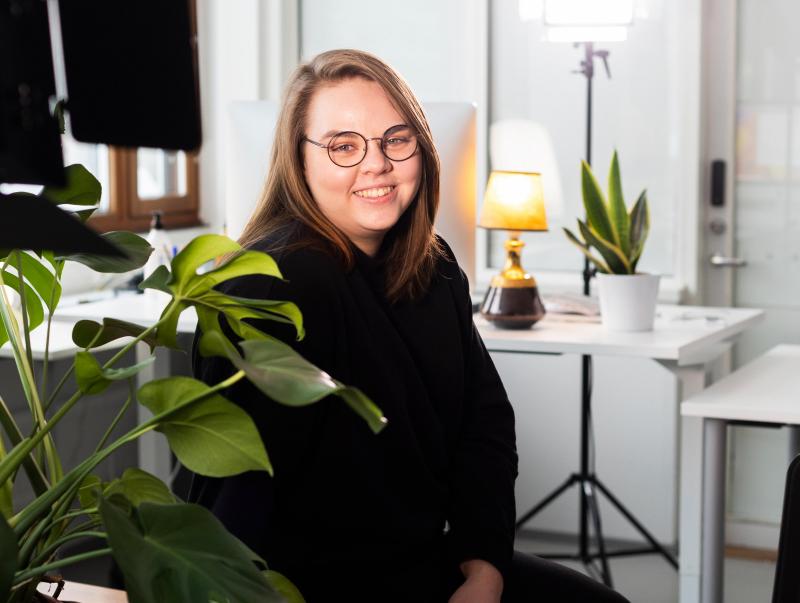Diverse forms of hiring
We need many types of talent to carry out our work. We initiated an anonymous hiring process, and the results have been so good that we are aiming to expand its use.
By diverse hiring, we refer to the various means and measures that we utilise to provide numerous options for becoming employed by the City. This also helps us ensure staff availability in a number of ways simultaneously.
Our aim is to give everyone an equal opportunity to use their skills to benefit the city. This form of hiring is also high in quality.
Discrimination based on a characteristic of an applicant or their loved one, or any assumptions, is forbidden when it comes to recruiting.
Therefore, we have continued to improve our hiring process, so that it promotes equality and parity, and have invested in these same elements in promoting our recruitment skills. Our aim has been to ensure, for example, positive applicant experiences and, above all, equal opportunity and treatment amongst the candidates.
An anonymous recruitment process pilot
At the start of February, we launched an anonymous recruitment process pilot, which continued until the end of the year.
The purpose of the anonymous hiring process is to lower the threshold for getting an interview without influence from any irrelevant factors.
This means that all personal information, such as an applicant’s name, date of birth, gender and age, is redacted in the applications. In other words, applicants are selected for interviews based on the skills and work experience that they describe in their applications.
We tested the anonymous process in all of our divisions, the City Executive Office, HKL and Service Centre Helsinki with 12 different job titles and roles.
For example, the Education Division anonymously hired playground instructors, the Culture and Leisure Division hired youth instructors, and the Social Services and Health Care Division hired office secretaries.
By the end of the year, the number of people recruited through an anonymous process was 48.
Based on the results of the pilot, anonymous hiring is an important part of diverse recruitment. Moreover, it has a positive impact on the employer image and encourages different types of people to apply for the City’s vacant positions.
The anonymous hiring process helped the recruiting supervisors to focus on the applicants’ skills and competence.
The willingness to continue this form of hiring is widespread. We have therefore decide to implement this functionality as part of our general hiring system, thereby expanding the method’s use to cover more recruitment processes.
Anonymously recruited into a media workshop
Emilia Mäkinen started working as a trainer in youth workshops’ Media Spa at Helsinki Vocational School in October. At the time, schools were able to offer face-to-face instruction despite the pandemic, and she had time to get to know her new colleagues and the young people in person.
Mäkinen got her job through anonymous hiring. Applying for a job without revealing your name, age or gender is such an unusual phenomenon that the City’s anonymous hiring process and Ms Mäkinen ended up in the national news around the end of the year.
‘In my job application, I had to give a description of myself that could not be used to identify me. In practice this meant that I listed my educational background and work experience. That was not particularly difficult, but I did have to think a bit more carefully about what I would write in the free-form section, what sort of an image it would convey and how it was likely to affect the impression that the person reading my application would gain of me.’
The job advertisement contained enough information about the vacant position. In addition to that, Mäkinen was already familiar with working in workshops.
In my job application, I had to give a description of myself that could not be used to identify me.
‘The hiring process left me feeling positive and happy to be starting in this job. The anonymity indicated to me that the employer was genuinely trying to avoid discrimination based on name, age, gender or any other such factor.’
The work has met her expectations. Mäkinen works with unemployed young people who come to the workshop from all walks of life. Some need more structure in their daily routines, while others have already decided what they want to do for a living. In a workshop, everyone can freely and safely try out work in the audiovisual sector.
‘I really enjoy my work,’ Mäkinen says.
Involving people with disabilities and those with a partial ability to work
We have helped people with disabilities and those who are partially able to work become employed in roles offered by the City by clarifying our operations and identifying some of the structural obstacles that make it difficult for people to become employed. We have assessed these factors in expert workshops and through targeted interviews.
We propose that the measures we have put forward be included in the next staff parity plan.

